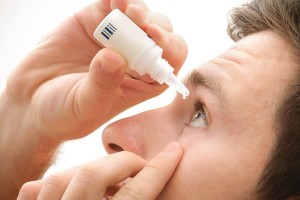Posted by: Georgia Eye Physicians and Surgeons in Latest News, Uncategorized
The eye is an extremely complex and precise instrument and, like any piece of precision machinery, it needs to be constantly lubricated in order for it to operate smoothly. For the eye, lubrication comes in the form of tears. Made by the lacrimal gland, tears are necessary for the overall health of the eye and in order to maintain clear vision. Tears bathe the surface of the cornea, keeping it moist and washing away dust and debris. They also help protect the eye from bacterial and other types of infections. When the eye does not produce tears properly, or when the tears are not of the correct consistency and evaporate too quickly, a condition known as dry eye occurs. Symptoms of dry eye can include: blurred vision, burning, itching, redness, gritty or scratchy feeling in the eye, and sensitivity to light.

Depending upon the specific cause of the patient’s dry eye, treatment approach can vary. Generally, mild cases can be treated with artificial tears or other medication. Cases resulting from specific environmental causes (like contact lens overuse or adverse allergic reaction) are treated by addressing the underlying issue; however, in more severe and chronic cases, Dr. William Segal can place tiny punctual plugs into the inner corner of the upper and lower eyelid where the tear drains are located. This conserves the naturally-occurring tears by preventing them from draining as quickly from the eye. The plugs come in either silicone (permanent) or collagen (dissolvable) varieties. The latter are used routinely following eye surgery.
If you have questions about diseases or conditions of the eye, or would like to schedule an appointment for an eye exam, please contact us today to make an appointment. Be sure to follow Dr. Segal and Dr. Lay on Facebook, Twitter, and Google+ for more tips for healthy eyes.

